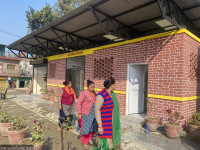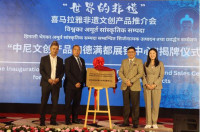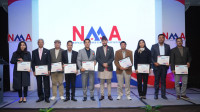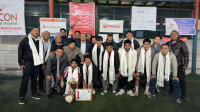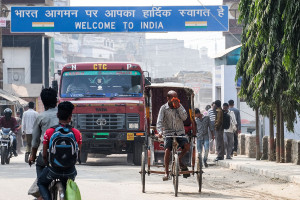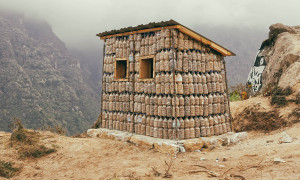Money
Floodgates open as Indian tourists flock to Nepal
Around 5,000 Indians enter Nepal daily from Belahiya. Over 1,300 vehicles cross daily, with most visitors heading for Pokhara, Kathmandu, and Chitwan.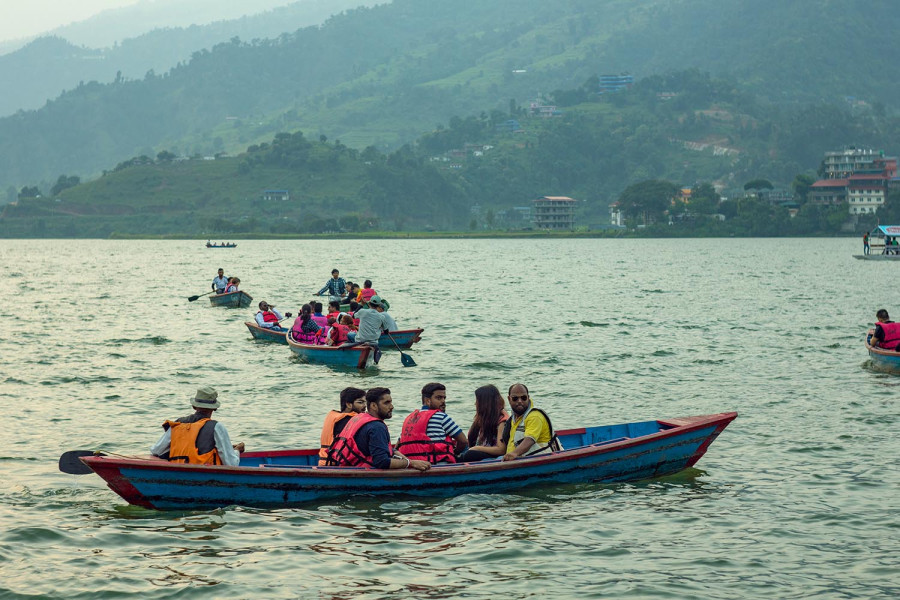
Dipendra Baduwal
Indian tourists no longer limit their visits to towns along Nepal’s southern border. Increasingly, they travel deeper into the country, reaching some of Nepal’s top destinations.
Tourism entrepreneurs say Pokhara is the most popular destination for Indians entering through the Belahiya border point in Bhairahawa. It is followed by Kathmandu—mainly for the Pashupatinath Temple—and Chitwan for jungle safaris.
Pilgrimage sites such as Supadeurali in Arghakhanchi and Swargadwari in Pyuthan also gain Indian visitors.
While just over 300,000 Indians arrive in Nepal annually by air, those entering via land routes are not officially counted as tourists.
Customs data show that in the last fiscal year 5,000 Indian nationals entered Nepal daily through Belahiya, and around 1,300 vehicles—from motorcycles to buses—crossed into Nepal each day.
According to the Bhairahawa Customs Office, 473,538 vehicles entered Nepal via Belahiya in fiscal year 2081–82. Of these, 351,748—including 224,488 motorcycles and 127,260 cars, jeeps and vans—were brought in under a “facility” provision, which exempts vehicles travelling to nearby markets from customs duties. On average, more than 900 vehicles a day entered under this arrangement.
Another 121,790 vehicles entered after paying customs duties: 12,563 buses and minibuses, 72,443 cars, jeeps, and vans, and 36,811 motorcycles. Customs chief Ram Prasad Regmi said most duty-paying vehicles carried tourists to Pokhara, Kathmandu, and Chitwan.
More than 300 Indian vehicles pay duties to enter Nepal each day. Rates are Rs600 for buses, minibuses, cars, jeeps, and vans, and Rs200 for motorcycles. The facility is available for up to 30 days a year per vehicle.
Local tourism entrepreneurs estimate that at least 5,000 Indian nationals visit Nepal daily via Belahiya, with 400–500 arriving without vehicles. Sagar Adhikari, former president of the Lumbini provincial chapter of the Nepal Association of Tour and Travel Agents (NATTA), said tourists entering with duty-paid vehicles typically spend four to five days in Nepal.
“About half go to Pokhara, 40 percent to Kathmandu, and 10 percent to Chitwan,” he said. Around half of those visiting Pokhara continue to Muktinath.
“The vehicles, drivers, and tourists are all Indian,” Adhikari said. “Despite the large numbers, Nepali tourism businesses see little benefit because Indian drivers take tourists only to easily accessible places, avoiding longer stays and lesser-known attractions.”
If Nepali guides and vehicles were used, tourists could see more scenic spots, giving greater exposure to our destinations, Adhikari added.
During the tourist season, the Siddhartha Highway between Belahiya and Pokhara sees a high volume of Indian vehicles, as does the Butwal-Narayangadh section of the East-West Highway. Vehicles entering under the one-day facility often take tourists to Lumbini in Rupandehi, Tilaurakot in Kapilvastu, Ramgram in West Nawalparasi, and Butwal before returning to India.
“Many Indian tourists go directly from Belahiya to Pokhara without stopping overnight in Butwal,” said Prabin Bahadur Pathak, president of the Nepalese Hoteliers’ Association. “We must develop packages that encourage at least a one-night stay here.”
Pathak suggested offering comfortable accommodation, good food, and short tours to nearby attractions before visitors head to their main destinations.
Nirmal Shrestha, operator of Bhairahawa Garden Resort, said tourists travelling via Palpa to Pokhara could extend their stays by visiting Ranighat Palace and the religious site of Ridi.
“If private operators design and promote such packages, visitors could spend a week in Palpa, visiting Bhairabsthan, Ridi, and Ranighat,” he said. “Despite our heavy dependence on Indian tourists, we have failed to promote Nepal’s attractions effectively in Indian cities.”
Indian visitors are also coming to Bhairahawa and the surrounding areas to visit casinos, attend weddings, hold business meetings, dine in restaurants, and enjoy leisure activities.
Tourism entrepreneur Bishnu Prasad Sharma said many duty-paying Indian tourists combine Lumbini with trips to Palpa, Pokhara, Chitwan, Muktinath, and Kathmandu.
“Indians are big spenders, but our agencies still don’t treat them as tourists,” he said. “Hassles at the border, customs checks, and frequent police inspections discourage them. These must be addressed.”
Sharma also stressed the need for an online payment system for customs and other fees. “If tourists could pay online, they wouldn’t have to queue for hours at customs,” he said.
“Poor road conditions, like those on the Butwal–Narayangadh section, are another deterrent. If we improve road connectivity, introduce online services, and ensure better treatment, we could see a surge in Indian arrivals.”
Om Prakash Pandey, general manager of Hotel Asian Buddha in Bhairahawa, said Rupandehi and other major tourist destinations rely heavily on Indian visitors.
“Even during the monsoon, when numbers drop slightly, Indian tourists are still a major presence,” he said.
“They visit hotels and restaurants year-round and spend more than visitors from other countries. They are the quality tourists we need, and they’re coming in growing numbers.”




 14.12°C Kathmandu
14.12°C Kathmandu
